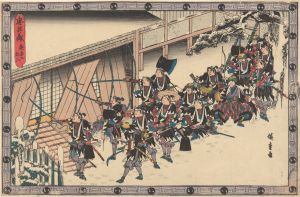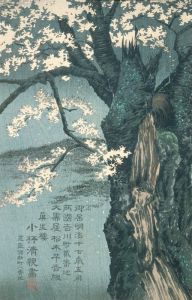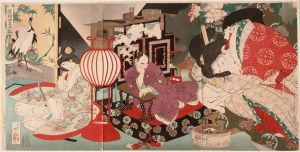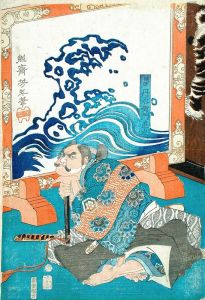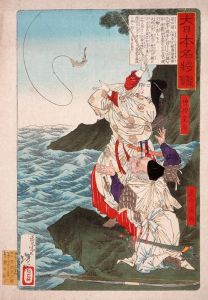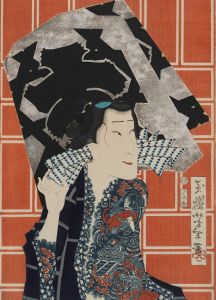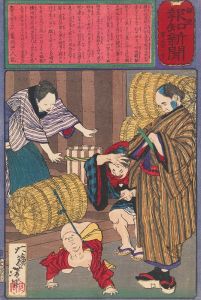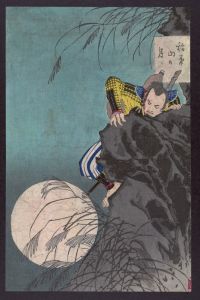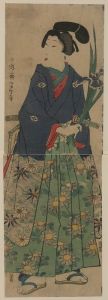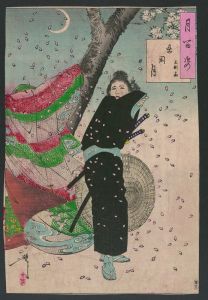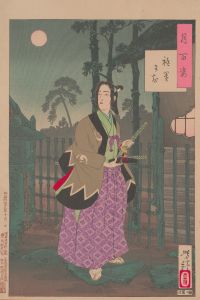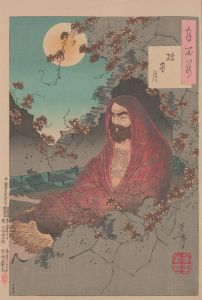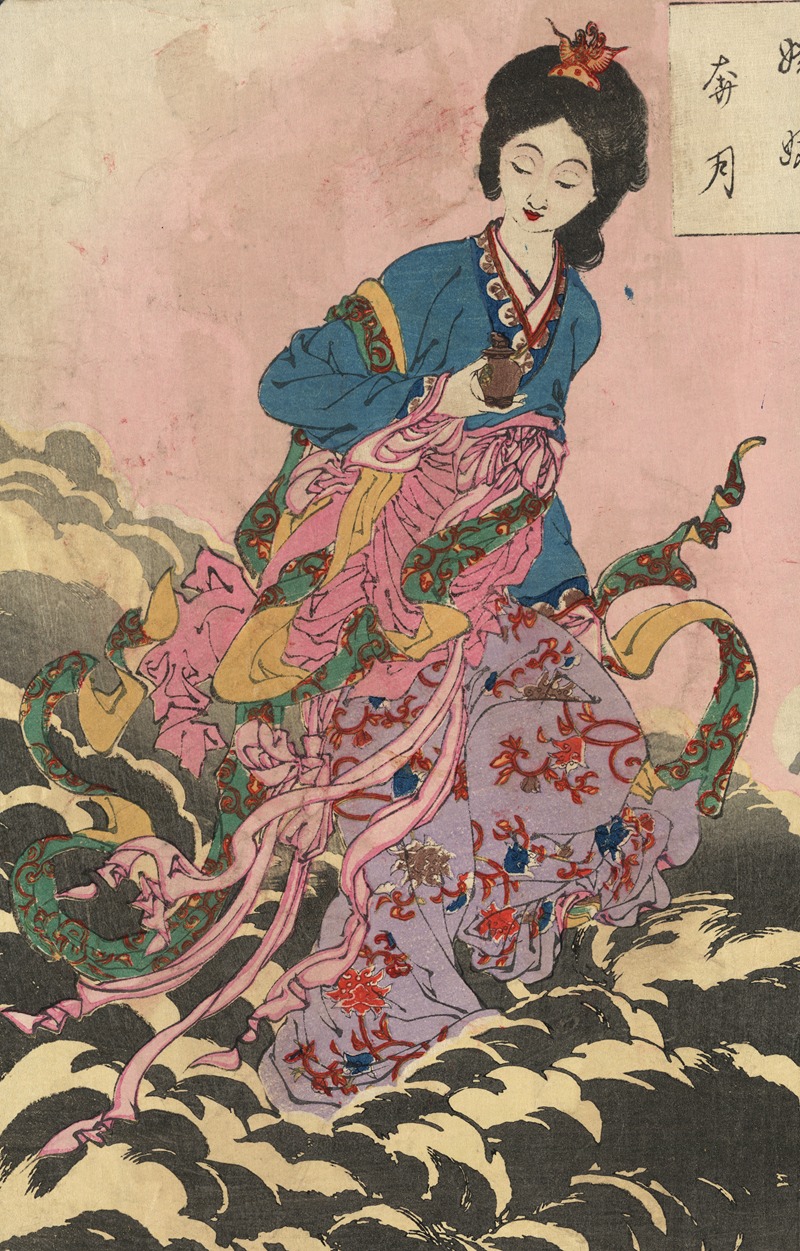
Jōga hongetsu
A hand-painted replica of Tsukioka Yoshitoshi’s masterpiece Jōga hongetsu, meticulously crafted by professional artists to capture the true essence of the original. Each piece is created with museum-quality canvas and rare mineral pigments, carefully painted by experienced artists with delicate brushstrokes and rich, layered colors to perfectly recreate the texture of the original artwork. Unlike machine-printed reproductions, this hand-painted version brings the painting to life, infused with the artist’s emotions and skill in every stroke. Whether for personal collection or home decoration, it instantly elevates the artistic atmosphere of any space.
"Jōga hongetsu" is a woodblock print created by the renowned Japanese artist Tsukioka Yoshitoshi. Yoshitoshi, born in 1839 and died in 1892, is often celebrated as one of the last great masters of the ukiyo-e genre of woodblock printing and painting. His works are known for their dynamic compositions, dramatic themes, and innovative use of color and shading.
The title "Jōga hongetsu" can be translated to "The Moon's True Form" or "The True Form of the Moon," reflecting Yoshitoshi's fascination with the moon, which is a recurring motif in his artwork. This particular print is part of Yoshitoshi's famous series "One Hundred Aspects of the Moon" (Tsuki hyakushi), which he produced between 1885 and 1892. The series consists of 100 woodblock prints, each depicting various scenes from Japanese and Chinese history, literature, folklore, and mythology, all unified by the presence of the moon.
"Jōga hongetsu" features a depiction of a historical or legendary figure, often portrayed in a moment of contemplation or action under the moonlight. Yoshitoshi's ability to capture the ethereal beauty and emotional depth of his subjects is evident in this print. His use of delicate lines and subtle gradations of color creates a sense of atmosphere and mood that draws the viewer into the scene.
Yoshitoshi's work, including "Jōga hongetsu," reflects the turbulent times in which he lived. The late Edo period and the early Meiji era were times of significant social and political change in Japan, as the country transitioned from feudalism to modernization. This period saw the decline of traditional ukiyo-e art due to the introduction of Western printing techniques and the changing tastes of the Japanese public. Despite these challenges, Yoshitoshi continued to innovate and push the boundaries of the medium, leaving a lasting legacy in the world of Japanese art.
The "One Hundred Aspects of the Moon" series, including "Jōga hongetsu," is highly regarded for its artistic quality and historical significance. Each print in the series is a testament to Yoshitoshi's skill as an artist and his deep understanding of Japanese culture and history. Today, these prints are highly sought after by collectors and are displayed in museums around the world, where they continue to be admired for their beauty and craftsmanship.
In summary, "Jōga hongetsu" by Tsukioka Yoshitoshi is a notable example of the artist's work and his contribution to the ukiyo-e genre. It showcases his mastery of woodblock printing and his ability to convey complex themes and emotions through his art. The print remains an important piece of cultural heritage, reflecting both the artistic traditions of the past and the changes of the Meiji era.






